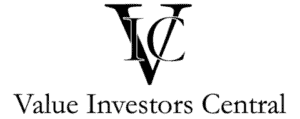Caterpillar Inc. is an American leading manufacturer of heavy equipment, machinery, and engines. The company has been in business for over 90 years and has built a reputation as a reliable and innovative company. Caterpillar has several competitive advantages that have helped it maintain its position as a leader in the industry.
Caterpillar’s Competitive Advantages
- Brand Reputation
Caterpillar has a strong brand reputation that has been built over decades. The company is known for producing high-quality, durable, and reliable equipment that can withstand even the toughest conditions. This reputation has helped Caterpillar attract new customers and retain existing ones, even during economic downturns.
- Global Presence
Caterpillar has a global presence, with operations in more than 190 countries. This allows the company to take advantage of growth opportunities in emerging markets and diversify its revenue streams. Caterpillar has also established a strong distribution network, which helps the company reach customers in even the most remote locations.
- Product Diversification
Caterpillar has a diverse portfolio of products and services, which includes heavy equipment, machinery, engines, and financial services. This diversification helps the company weather economic downturns and reduces its dependence on any one market or product line.
- Innovative Culture
Caterpillar has a culture of innovation, which has helped the company develop new products and technologies that meet evolving customer needs. The company invests heavily in research and development, and has established partnerships with universities and other research institutions to help drive innovation.
- Customer Focus
Caterpillar places a strong emphasis on customer service and support. The company provides training and support to customers, and offers a range of aftermarket services, such as parts, maintenance, and repairs. This focus on customer satisfaction has helped Caterpillar establish long-term relationships with its customers.
Who are Caterpillar’s Competitors?
Caterpillar faces significant competition from other companies in the heavy equipment and machinery industry. Some of the company’s main competitors include:
- Komatsu: Komatsu is a major Japanese manufacturer of construction and mining equipment. The company has a strong global presence, with operations in more than 150 countries. Komatsu offers a range of products and services that are similar to those of Caterpillar. In recent years, Komatsu has made significant investments in research and development, focusing on electric and autonomous vehicles.
- Volvo Group: Volvo Group is a Swedish manufacturer of heavy equipment, trucks, and buses. The company has a diverse product portfolio, which includes construction equipment, industrial power systems, and marine and aerospace products. Volvo Group has a strong global presence, with operations in more than 190 countries. The company has also made significant investments in research and development, focusing on electrification and autonomous technologies.
- Hitachi Construction Machinery: Hitachi Construction Machinery is a Japanese manufacturer of construction and mining equipment. The company has a strong presence in Asia and offers a range of products and services that are similar to those of Caterpillar. Hitachi Construction Machinery has made significant investments in research and development, focusing on autonomous and electric technologies.
- Liebherr Group: Liebherr Group is a Swiss manufacturer of construction and mining equipment. The company has a diverse product portfolio, which includes cranes, mining trucks, and concrete equipment. Liebherr Group has a strong global presence, with operations in more than 130 countries. The company has also made significant investments in research and development, focusing on electric and autonomous technologies.
What are Caterpillar’s Weaknesses?
Caterpillar’s main weakness is its dependence on the cyclical nature of the industries it serves. The company’s sales are heavily influenced by the economic conditions in the construction, mining, and energy sectors. In times of economic downturns, demand for Caterpillar’s products and services may decrease, resulting in lower revenues and profits. Additionally, Caterpillar’s heavy reliance on diesel engines has put the company under scrutiny from environmentalists and regulators, who are calling for cleaner and more sustainable technologies.
What are Caterpillar’s Opportunities for Growth?
To overcome its weaknesses, Caterpillar has identified several opportunities for growth. The company has made significant investments in research and development, focusing on electrification and autonomous technologies. Caterpillar has also expanded its product portfolio, offering a range of solutions that cater to the changing needs of its customers. For instance, the company has developed products that are more fuel-efficient and environmentally friendly. Additionally, Caterpillar has strengthened its global presence by expanding its operations in emerging markets, such as China, India, and Brazil.
Furthermore, Caterpillar is also exploring opportunities in the services sector. The company has introduced new service offerings, such as data analytics and predictive maintenance, to help its customers improve their operational efficiency and reduce downtime. By offering these services, Caterpillar is not only diversifying its revenue streams but also strengthening its relationship with its customers.
Conclusion
In conclusion, Caterpillar has several competitive advantages that have helped it maintain its position as a leader in the heavy equipment and machinery industry. The company’s strong brand reputation, global presence, product diversification, innovative culture, and customer focus all contribute to its success. However, the company also faces several challenges, including increasing competition, changing customer needs, and regulatory changes. To maintain its competitive position, Caterpillar must continue to invest in technology and innovation, expand its presence in emerging markets, diversify its revenue streams, and focus on sustainability initiatives.


